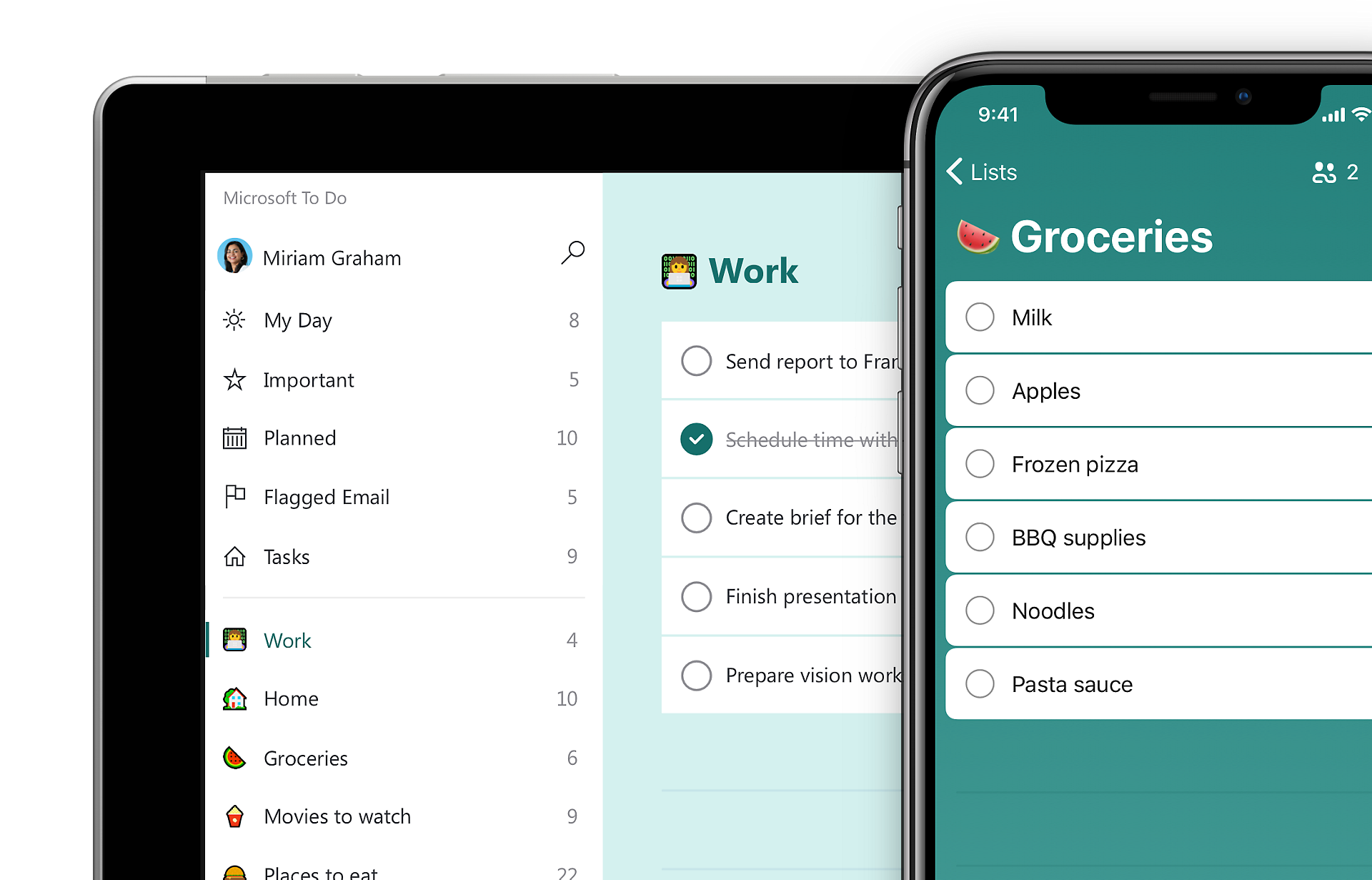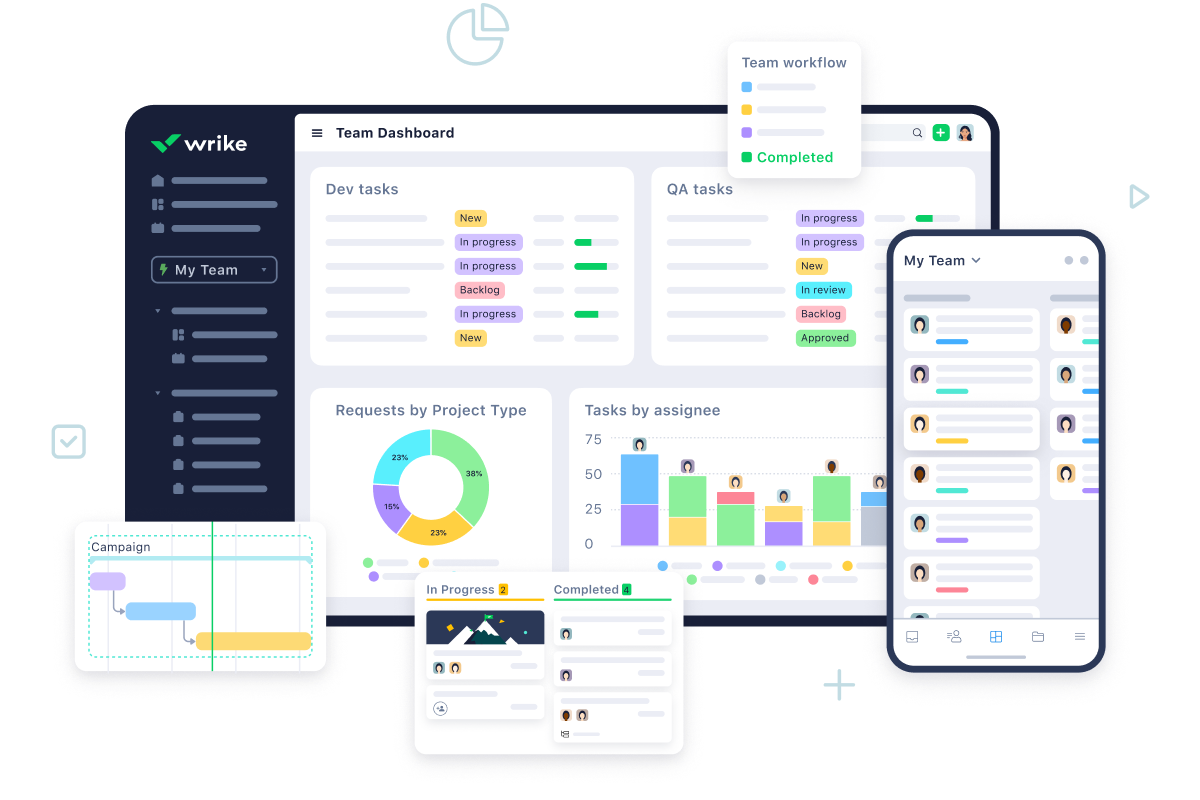Back to all comparisons
Microsoft To Do vs Wrike
Comprehensive comparison to help you choose the right tool for your needs
Microsoft To Do
4.5
Microsoft To Do is a task management app integrated with Office 365. It helps organize daily tasks, set reminders, and sync across devices. Ideal for both personal and professional use, it promotes productivity with features like shared lists and task prioritization. This app is especially beneficial for users within the Microsoft ecosystem.
Free
Visit Website 
Wrike
4.7
Wrike is a comprehensive project management tool offering workflow automation, data visualization, and collaboration features for teams.
Free, Professional at $9.80/user, Business at $24.80/user, and Enterprise. Each varies by features and team size
Visit Website Quick Summary
Microsoft To Do Strengths
- Task Addition: Easily add tasks and organize them in custom lists.
- Task Details: Add due dates, reminders, and files to tasks.
- Task Prioritization: Mark tasks as important for better focus.
- List Sharing and Collaboration: Share lists with others and assign tasks.
Wrike Strengths
- Interactive Gantt Charts: Wrike's Gantt charts allow users to visualize project timelines and dependencies. This feature helps in planning and adjusting schedules with simple drag-and-drop adjustments, facilitating easy management of complex project timelines.
- Real Time Collaboration: Teams can collaborate in real time, with updates and communications happening instantly across the platform. This ensures that all team members are on the same page and can react quickly to changes or updates.
- Customizable Dashboards: Wrike offers fully customizable dashboards that give users control over what data they see and how it's presented. This helps in tracking the most relevant project metrics and individual tasks, tailoring the view to meet specific needs or roles within a team.
- Integrated Resource Management: The software includes tools for resource allocation and management, allowing managers to oversee team workloads, plan capacity, and distribute tasks efficiently to avoid overloading employees.
Microsoft To Do Screenshot

Wrike Screenshot

Feature Comparison
| Feature | Microsoft To Do | Wrike |
|---|---|---|
| Platforms | Windows, macOS, iOS, Android, and as a web and desktop app. | Yes |
| Integrations | Microsoft Products such as Outlook, allows external apps to connect with their API | Salesforce, Microsoft Teams, Google Drive, Slack, Adobe Creative Cloud, and Zoom |
| Calendar | Not Inbuilt | Yes |
| Task Management | To-do lists, Task priorities, Subtasks, and color-coding items for organization. | Task Creation and Updating, Multiple Viewing Options, Time Tracking, Templates, Comprehensive Task Reports, Task history logging, File Uploads and Sharing capabilities |
| Natural Language Processing | Yes | No |
| Analytics | No | Yes |
| Time Blocking | No | Yes |
| Time Zones | Yes | Yes |
| Scheduler | No | Yes |
| Notifications | Yes | Yes |
| Pricing | Free | Free, Professional at $9.80/user, Business at $24.80/user, and Enterprise. Each varies by features and team size |
| Customer Support | Average | Good |
Video Overview
Microsoft To Do Video
Wrike Video
Microsoft To Do Overview
Microsoft To-Do is a streamlined and user-friendly task management application that integrates seamlessly with the Microsoft ecosystem. Designed to enhance productivity for both individual and professional use, MS To-Do stands out with its simple yet effective interface. It allows users to create lists, set reminders, and track tasks across various devices, ensuring accessibility and convenience. The app's integration with Microsoft services like Outlook makes it a natural choice for users already embedded in the Microsoft environment. MS To-Do’s focus on simplicity and integration caters to those who need a straightforward, no-frills approach to task management while benefiting from the robustness of Microsoft’s technology.
Pricing Details
MS To do is absolutely free.
Wrike Overview
Wrike is a project management software designed to help teams manage their workspace and projects more efficiently. It offers a traditional interface with a wide range of functionalities including tables, boards, Gantt charts, and templates for collaboration across remote, hybrid, and in-person teams. Wrike supports various types of file proofing and integrates well with other tools like Miro, Microsoft Teams, and Slack. It is particularly popular among marketing and sales teams for its resource management and time logging features.
Pricing Details
Wrike offers several pricing plans based on the size and needs of teams. Here's a brief overview: (i) Free Plan: Designed for teams just starting out, offering basic project management features with limitations on active tasks. (ii) Professional Plan: Costs $9.80 per user/month, suitable for teams of 2-25 users, offering unlimited projects, tasks, and 2 GB of storage per user. (iii) Business Plan: Priced at $24.80 per user/month, tailored for larger teams, it includes comprehensive project management tools, automation, approvals, and 5 GB of storage per user. (iv) Enterprise Plan: For large teams needing enterprise-grade security and scalability, with pricing available upon contact. It includes advanced security features, automation, and 10 GB of storage per user. (v) Pinnacle Plan: Aimed at teams with complex work needs, offering advanced analytics, 15 GB of storage per user, and premium features, with pricing available upon request.
Microsoft To Do Key Features
Task Addition: Easily add tasks and organize them in custom lists.
Task Details: Add due dates, reminders, and files to tasks.
Task Prioritization: Mark tasks as important for better focus.
List Sharing and Collaboration: Share lists with others and assign tasks.
Integration with Microsoft Tools: Seamlessly works with Outlook, Cortana, and other Microsoft applications.
Customizable Themes and Backgrounds: Personalize the app with various themes and backgrounds for a unique user experience.
Wrike Key Features
Interactive Gantt Charts: Wrike's Gantt charts allow users to visualize project timelines and dependencies. This feature helps in planning and adjusting schedules with simple drag-and-drop adjustments, facilitating easy management of complex project timelines.
Real Time Collaboration: Teams can collaborate in real time, with updates and communications happening instantly across the platform. This ensures that all team members are on the same page and can react quickly to changes or updates.
Customizable Dashboards: Wrike offers fully customizable dashboards that give users control over what data they see and how it's presented. This helps in tracking the most relevant project metrics and individual tasks, tailoring the view to meet specific needs or roles within a team.
Integrated Resource Management: The software includes tools for resource allocation and management, allowing managers to oversee team workloads, plan capacity, and distribute tasks efficiently to avoid overloading employees.
Advanced Security Features: Wrike provides robust security measures, including role-based access control, to ensure that sensitive project data is protected and only accessible to authorized personnel.
Automation Tools: With Wrike, repetitive tasks can be automated using custom workflows, which saves time and reduces the potential for human error. This feature supports a smoother project flow and improves overall efficiency.
Conclusion: Which Tool Should You Choose?
Both Microsoft To Do and Wrike offer unique features and benefits for productivity and workflow management. The best choice depends on your specific needs, team size, and workflow preferences.
Choose Microsoft To Do if:
- Task Addition: Easily add tasks and organize them in custom lists.
- Task Details: Add due dates, reminders, and files to tasks.
- Task Prioritization: Mark tasks as important for better focus.
Choose Wrike if:
- Interactive Gantt Charts: Wrike's Gantt charts allow users to visualize project timelines and dependencies. This feature helps in planning and adjusting schedules with simple drag-and-drop adjustments, facilitating easy management of complex project timelines.
- Real Time Collaboration: Teams can collaborate in real time, with updates and communications happening instantly across the platform. This ensures that all team members are on the same page and can react quickly to changes or updates.
- Customizable Dashboards: Wrike offers fully customizable dashboards that give users control over what data they see and how it's presented. This helps in tracking the most relevant project metrics and individual tasks, tailoring the view to meet specific needs or roles within a team.